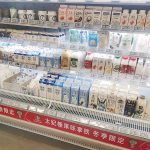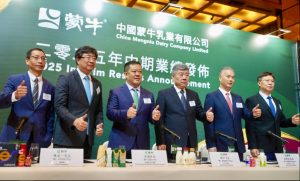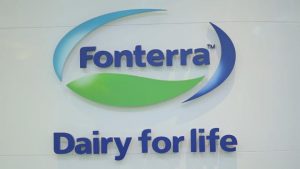
Nutiani has revealed rising 2025 trends backed by global consumer data and Fonterra’s five macro trends. Key highlights of its analysis include rising demand for high-protein, low-calorie foods for GLP-1 users, AI tools enabling hyper-personalized diets and sustainable, natural products.
Pooja Passi, head of Insight, Advanced Nutrition at Fonterra, tells Nutrition Insight about the company’s recently launched webcast, which breaks down this year’s industry themes.
The company also notes that brands are facing challenges, including consumer concerns over drug dependency, affordability barriers and the need for precise segmentation to align with evolving health priorities while maintaining safety and transparency.
Weight loss drug impacts
Product innovation around GLP-1 weight loss treatment has been ramping up, as evidenced by brand activity. Lemme, the supplement brand founded by reality star Kourtney Kardashian Barker, for instance, recently introduced Lemme GLP-1 Daily, a plant-based supplement that claims to naturally boost GLP-1 hormone levels.
Passi highlights Nutiani’s own studies and on-ground insights coupled with industry studies, which have shown that GLP-1 weight-loss drugs will continue to influence consumer behavior and, consequently, the food industry landscape in 2025.
“Consumers are starting to express concern about the sustained impact on eating habits, costs and long-term health effects, which can include gastrointestinal issues and potential dependency, overshadowing the positive narratives of efficacy and health benefits.”
Three out of ten consumers who are aware of these prescription weight-loss medications still express a strong desire to use them, and another 25% show some interest in them, she continues.
“In response, stakeholders in the food and health sectors must recognize its potential impact and adapt to the increased interest and use of GLP-1 drugs. New product innovations must take these into consideration and address evolving needs. Muscle loss has been associated with GLP-1 drugs, driving the emergence of protein as a key ingredient to support users of GLP-1 drugs,” Passi warns.
“With denser protein products for higher protein intake without the calories, smaller portion sizes of snacks and meals or healthier alternatives will be a key area of focus. At the same time, nutritious products that aid in metabolic health and weight management, such as low-sugar, high-fiber and high-protein treats, can also support GLP-1 users.”
ADM recently identified five unique needs for GLP-1 consumers, which it addresses with its ingredient solutions. “Three of them are when the consumer is actively on a GLP-1 drug, and two of them happen when the consumer comes off the drug,” Brad Schwan, VP of marketing at ADM, recently told Nutrition Insight at SupplySide West 2024.
Hyper-personalization hype
AI-driven platforms and tools have enabled consumers to analyze and track their own personal metrics and health, Passi says, further fueling the demand for hyper-personalization as more consumers realize that health and well-being are highly personal and not one-size-fits-all.
 Nutiani’s finds GLP-1 weight-loss drugs will continue to influence consumer behavior and the food industry landscape next year.“Today, there are wearable technologies that allow consumers to set their own health parameters to enable and monitor highly individualized nutrition plans. In the future, we can expect these technologies to be even more powerful, allowing consumers to leverage real-time health data such as fat percentage, early symptoms of illness (cold, cancer markers, etc.) and BMI to determine the best dietary needs for the wearer.”
Nutiani’s finds GLP-1 weight-loss drugs will continue to influence consumer behavior and the food industry landscape next year.“Today, there are wearable technologies that allow consumers to set their own health parameters to enable and monitor highly individualized nutrition plans. In the future, we can expect these technologies to be even more powerful, allowing consumers to leverage real-time health data such as fat percentage, early symptoms of illness (cold, cancer markers, etc.) and BMI to determine the best dietary needs for the wearer.”
“This ability to obtain real-time analyses can also help consumers understand the effectiveness of products made with ingredients such as probiotics. Often, the impact of science-backed ingredients can feel unclear to consumers.”
Passi goes on to say that when strong AI tools are developed, users will be able to track metrics such as cortisol levels or the proportion of beneficial bacteria in the microbiome, providing data-rich insights into product effectiveness.
In activities within this space, Hologram Sciences used AI models to monitor patients’ accurate and real-time nutritional intake in healthcare settings. Another platform, Heali, leveraged AI to mainstream the food-as-medicine lifestyle with its US$3 million-backed app that customizes recipes to address users’ autoimmune, gastrointestinal and neurological conditions.
Social media talks
Fonterra’s social media analysis reveals 1.63 million netizens have mentioned “Ozempic” in this quarter alone.
 Natural living has emerged from consumers looking to lead low-toxicity lifestyles.“If we look at the year-to-date numbers, mentions of ‘Ozempic’ increased 299% in the January to November period over the same time last year. Although interest in GLP-1 medications is still on an uptrend, much of the public discourse online often skews to the negative, with concerns around the side effects and long-term implications,” Passi details.
Natural living has emerged from consumers looking to lead low-toxicity lifestyles.“If we look at the year-to-date numbers, mentions of ‘Ozempic’ increased 299% in the January to November period over the same time last year. Although interest in GLP-1 medications is still on an uptrend, much of the public discourse online often skews to the negative, with concerns around the side effects and long-term implications,” Passi details.
However, she notes some apprehension about the side effects of the drug and fears of dependency despite its popularity.
“Simultaneously, an interest in natural living has now emerged from consumers looking to lead low-toxicity lifestyles. These consumers are aware of environmental pollutants and health hazards, including microplastics and chemicals, and are also actively rejecting the use of overly processed foods and synthetic products.”
“Instead, this group turns to organic products and holistic wellness practices that align with their demand for sustainability and authenticity in ingredients and habits. This trend reflects a deeper cultural pivot: while earlier consumer preferences were shaped by brand prestige and innovation, today they are guided by simplicity and a return to basics.”
The social media analysis makes it evident that brands must now deal with a more complicated environment.
“On one end of the spectrum, the power of modern medicines is well-embraced, albeit with degrees of hesitation, while on the other end of the spectrum, there is a trend toward naturalness and reconnection with health and well-being,” continues Passi.
“To this end, these two ends of the spectrum of evolving consumer demands provide both challenges and opportunities for brands who must continue to innovate while staying true to the values of safety, transparency and sustainability.”
 Nutiani expects wearable technologies to become more powerful as interest in hyperpersonalization grows.Resolving challenges
Nutiani expects wearable technologies to become more powerful as interest in hyperpersonalization grows.Resolving challenges
Passi expects marketers will face a growing challenge in understanding their target audience through segmentation. “In the past, health and nutrition were more of a concern for specific segments of the population, such as athletes and gamers. However, it has now become a mainstream concern.”
“For consumers concerned about healthy aging, we can seek to understand their priorities by segmenting them into their demographics: age, gender, culture and more. Yet, as more trends, such as AI use and a return to natural living, emerge, marketers need to find alternative methods to break down and understand the different segments to best address the relevant consumer needs.”
Passi adds that “GLP-1 drugs come at a high cost, which is a barrier to adoption for many consumers who require weight management solutions.”
“In turn, marketers can conduct more in-depth studies and surveys to understand their budgets and needs before translating these limitations to brands who can innovate alternative products to help address specific concerns. To some extent, this is also an element of segmentation and will definitely be the right investment for marketers to find success in meeting consumer priorities.”
You can now read the most important #news on #eDairyNews #Whatsapp channels!!!
🇺🇸 eDairy News INGLÊS: https://whatsapp.com/channel/0029VaKsjzGDTkJyIN6hcP1K

























